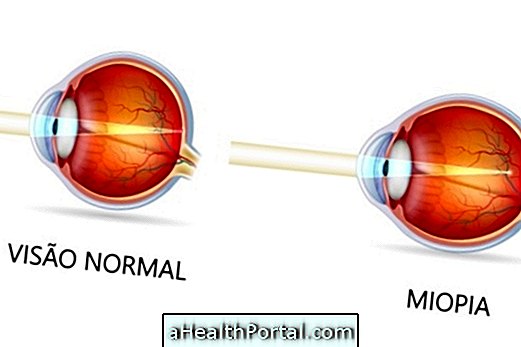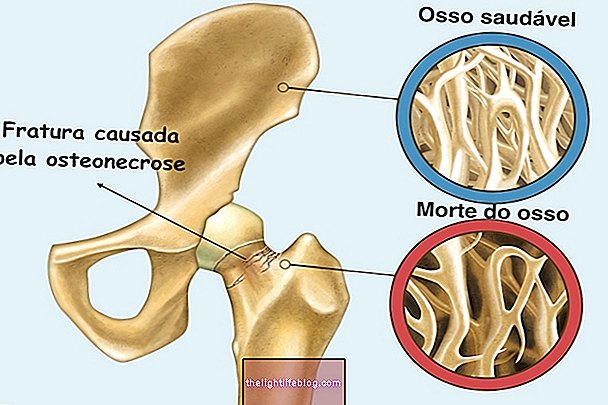Amblyopia, also known as lazy eye, is the visual impairment that occurs mainly due to lack of stimulation to the affected eye during the development of vision, being more frequent in children and young adults.
It is detected by the ophthalmologist, and the determination of the cause is essential to decide which type of treatment is indicated, such as the use of glasses or cap in the eye, and whether or not there will be a cure. In addition, to cure amblyopia, it is important that this visual abnormality is identified and treated early, as persistence for many years can lead to irreversible atrophy of the eye nerves and prevent vision correction.
Amblyopia may appear mild to severe, affecting only one or both eyes, and can range from functional causes to vision loss in one eye, to organic causes, in which an injury makes it difficult to see the eye. view. Thus, the brain usually favors the sight of the better seeing eye, and the sight of the other eye is increasingly suppressed.
The main types are:
1. Strabismic amblyopia

It is the most common cause of amblyopia, which occurs in children born with strabismus, commonly known as "vesguice". In these cases, the child's brain can adapt the vision so that it does not duplicate, and ends up suppressing the vision of the deviated eye, ignoring the vision capped by this eye.
Although it can adapt the child's vision to strabismus, this suppression of stimuli results in reduced vision of the affected eye. This may be curable with treatment, however, it is important that it be done as early as possible in the early years of life to allow the vision to be fully recovered.
- Treatment : up to 6 months of age, strabismus is usually treated with the eyelid, or cap of the eye, which occludes the unchanged eye and stimulates the eyelid to stay centralized and able to see. However, if the change continues after that age, the ophthalmologist may indicate surgery to correct the action of the eye muscles, causing them to move in a synchronized manner.
Check out more details on how strabismus treatment in the baby can be done and treatment options for the adult.
2. Refractory amblyopia

This type of change occurs when there are refractive problems in the vision, such as myopia, hypermetripy or astigmatism, for example. It can be of types:
- Anisometrópica : when there is a difference of degrees between the eyes, even if it is not very intense, causing that the vision of an eye predominates on the eye with worse vision;
- Ametropic : occurs when there is a refractive problem of high degree, even if bilateral, and usually happens in cases of hypermetropia;
- Meridian : is caused by an astigmatism not corrected properly, that also can cause suppression of the vision.
Refractive errors are important causes of amblyopia, and should be detected and treated early to prevent them from causing irreversible visual impairment.
- Treatment : Refractive errors due to wearing glasses should be corrected to the degree recommended by the ophthalmologist.
Learn how to identify the signs that the child needs to wear glasses to avoid amblyopia.
3. Amblyopia due to deprivation

Amblyopia due to stimulus deprivation, or ex-anopsia, occurs when diseases that prevent light from entering the eye into correct vision, such as a congenital cataract, opacities or corneal scars, for example, interrupt visual development.
In some cases, even the use of the eye patch used to treat strabismus, which is constantly used, may be a cause of amblyopia in the eye that is deprived of vision.
- Treatment : It is oriented according to the cause, so as to try to correct the initial visual change, such as surgery for cataract removal. The sooner the treatment is performed the greater the chances of recovery from vision.
Symptoms of Amblyopia
Usually, amblyopia does not cause symptoms, appearing and worsening silently, mainly because it is a problem that usually affects children.
Therefore, it is important to be alert to signs of misalignment of the eyes that indicate strabismus or visual difficulties such as difficulties in learning at school, closing eyes or moving objects away to read, for example, indicating refractive problems. If they arise, you should schedule an appointment with the ophthalmologist, who will perform the ophthalmological examination. Understand better how the ophthalmologic exam is done and when it is necessary to do it.























